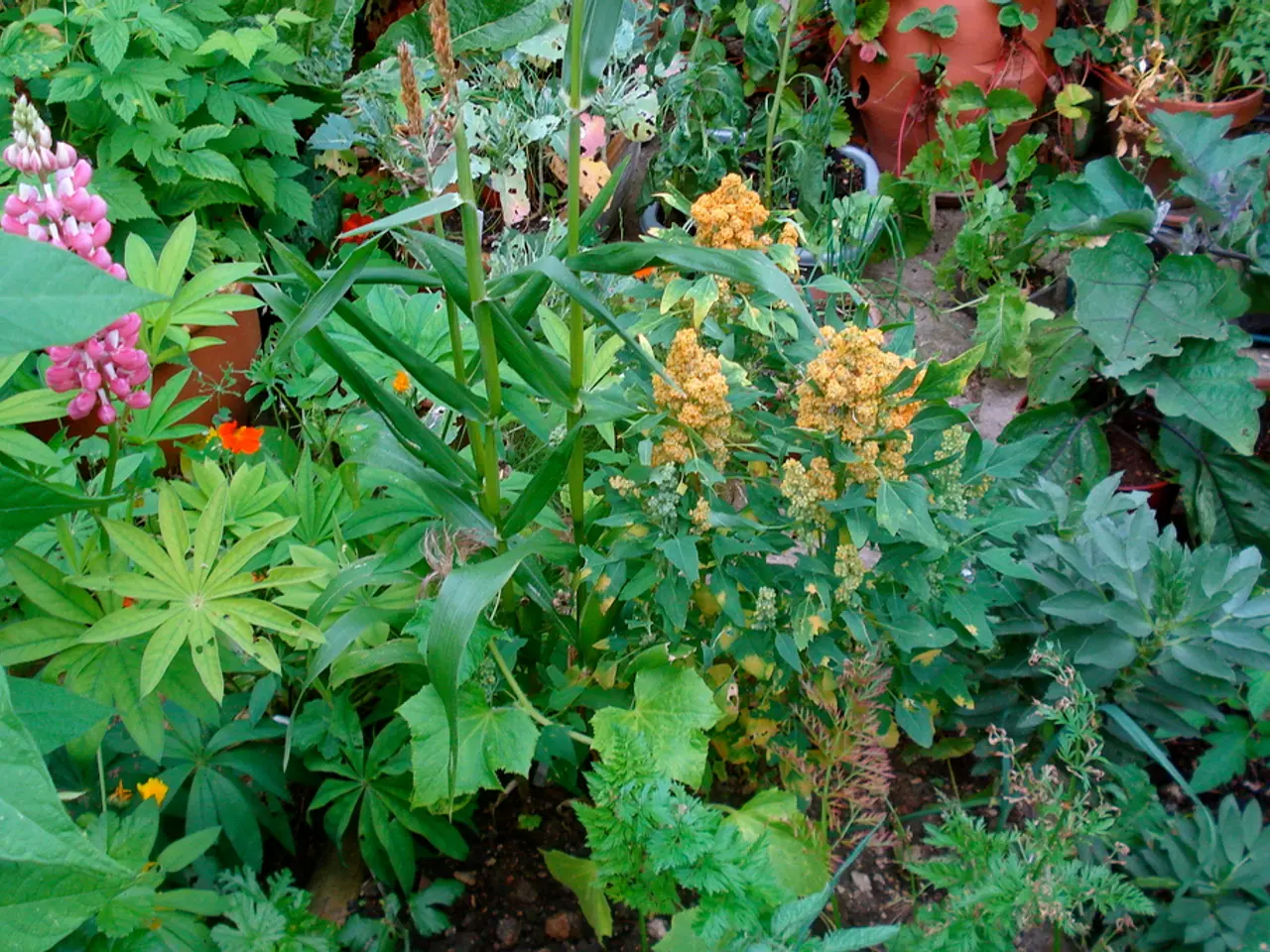Cultivating Verbena: Optimal Methods for Planting, Hydrating, and Pruning this Drought-Resistant Blossom for Vibrant Flower Displays
In the world of gardening, Verbena stands out as a low-maintenance, pollinator-friendly perennial plant that thrives in various spaces, from borders and containers to balconies. With its vibrant blooms and drought-tolerant nature, Verbena is an ideal choice for those looking to add a touch of beauty to their gardens with minimal effort.
To encourage continuous blooming, Verbena benefits from monthly fertilisation using a balanced, slow-release fertiliser, particularly when grown in containers. However, in borders, over-fertilising can reduce flowers, and the plant is known to thrive in low-nutrient soils.
Verbena prefers full sun and well-drained soil with some grit or horticultural sand to aid drainage. This plant is drought-tolerant once established, requiring minimal watering.
For those looking to propagate Verbena, the best method is to take cuttings from healthy non-flowering stems during July. Here's a step-by-step guide:
1. Select several healthy non-flowering stems from the Verbena plant. 2. Cut the stems just below a leaf joint, aiming for cuttings between 5 and 8 cm long. 3. Remove all leaves except for two or three at the top of the stem. 4. Place these cuttings in a glass of water until roots start to develop, which usually takes about 6 weeks. 5. Once roots have formed, transfer the new plants into a pot with soil to continue growing before planting outdoors.
This method is straightforward and effective, providing a simple way to clone your favourite Verbena plants rather than growing from seed, which is more common earlier in the year.
If you don't already have Verbena to take cuttings from, purchasing a healthy plant such as Verbena bonariensis can be a good starting point for propagation. Verbena bonariensis is known for its tall stature and ability to seed itself, but it may become a nuisance in loose, well-drained soils due to its tendency to self-seed.
When planting Verbena, holes should be as deep and wide as the root ball, and the plants should be watered thoroughly after planting. Deadheading is not necessary for Verbena, but experts recommend cutting them back every now and then. A 'Chelsea chop' can also be performed on Verbena bonariensis in May, cutting them down by about a third to encourage more flowering side shoots.
Verbena thrives in low-nutrient soils and does not require soil improvement before planting. However, if grown in containers, a balanced slow-release fertiliser can help promote healthy growth. Fertiliser can impair flowering if overused for Verbena in borders, but occasional feeding is acceptable.
Many varieties of Verbena are perennial, meaning they reappear every spring and bloom from summertime up to the first frosts. Verbena rigida is a low-growing Verbena that is suitable for softening the edge of a border.
In conclusion, Verbena is an excellent choice for gardeners seeking a low-maintenance plant that adds beauty and structure to their gardens. With its drought-tolerant nature, pollinator-friendly qualities, and versatility in various growing conditions, Verbena is truly a gem in the world of gardening.
This versatile Verbena plant, suitable for home-and-garden enthusiasts, can be propagated easily through cuttings to expand one's garden, replacing the need to grow from seed. To maintain continuous blooming, consider fertilising Verbena grown in containers with a balanced, slow-release fertiliser, while avoiding over-fertilising in borders.




